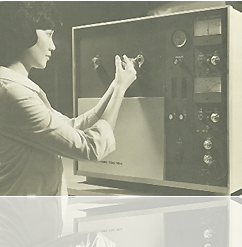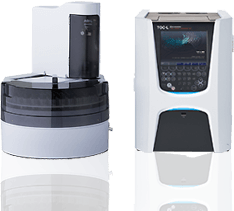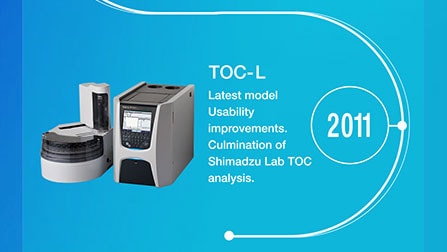

TOC Academy

History of Shimadzu TOC Analyzers:
A History of Cutting-Edge Innovation
2022 marks the 50th anniversary since Shimadzu first released a TOC analyzer. Today, Shimadzu TOC analyzers are used in a wide variety of fields ranging from laboratory quality control applications for public water supply management, drinking water management, purified water management in the pharmaceutical and other industries, environmental water measurement, and wastewater management, to online measurement applications for water quality or pollutant management of factory effluents into rivers, oceans, etc.
Shimadzu development of TOC analyzers began after Shimadzu established a technical partnership with Hartmann & Braun of West Germany in 1965 and the National Industrial Research Institute of Nagoya asked Shimadzu to develop a TOC analyzer in 1967.
In 1972, Shimadzu developed and released its first TOC analyzer products: the TOC-100 automatic water quality monitoring system for continuous monitoring of water quality and pollutants in public waters based on the Water Pollution Prevention Act and the TOC-10 total organic carbon analyzer for laboratory use.
In 1983, Shimadzu developed the TOC-500, which was the world’s first TOC analyzer with 680 °C combustion catalytic oxidation capability. That significantly extended the life of combustion tubes and catalysts and improved ease of maintenance.
In 1989, the TOC-5000 featured a mechanism for automatically injecting samples and expanded the measurement range from the ppm level to the ppb level. That resulted in broader applicability of TOC measurements, including for purified water, and established Shimadzu as the global leader in TOC analyzers.
The TOC-V series released in 2000 featured additional functionality for measuring solid samples, purgeable organic carbon (POC), and total nitrogen (TN), which further expanded the applicability of TOC analyzers. Today, the TOC-L series released in 2011 continues to serve at the forefront of TOC analysis.
Initially, TOC analyzers were mainly used for ensuring the water quality of environmental waters, industrial effluents, and so on, but later, as TOC performance improved, the scope of applications expanded. Now they are also used for quality control of purified and ultrapure water, for ensuring compliance with public drinking water quality standards, for controlling/evaluating pharmaceutical manufacturing processes, and for researching carbon-neutrality. Thus they serve a vital role in a variety of fields important for people and the Earth.



